Positive, Negative and Zero sequence impedance values of cable systems are needed for performing fault current calculations and other power system simulations. Since cable is a passive system the positive and negative sequence impedance are the same.

The cable sequence impedance depends on the self and mutual impedance of each phase conductor with other phase conductor as well as between phase conductor and another ground or neutral return conductor. Presence of cable shield and its properties will also influence sequence impedance values.
Positive and negative sequence impedance is dependent on the impedance of the line from the sending to the receiving end. This is different for zero sequence impedance wherein current flows through the conductor and return through the ground or cable sheath. Zero sequence impedance is also dependent on the self and mutual impedances to other phases.
Sequence impedance for a generic series impedance (say transmission line with ground return) is given by:

For a medium voltage tape shielded cable, the positive and zero sequence impedance (ohms/1000ft) is slightly modified and is given by:

An example case of 15kV class tape shielded cable impedance is reviewed. Two types of cables are listed 1) Three single conductor cables laid flat with 7.5inches between center to center 2) Three conductor cable in three core or trefoil formation. Earth resistivity is assumed to be 100 ohm-m.
Below is a plot of resistance and reactance values for three single [1c] conductor cable plotted against cable size.
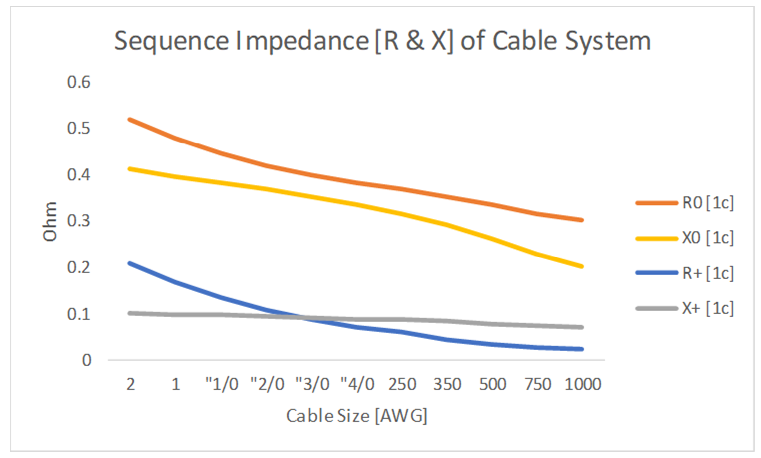
Below is a plot of resistance and reactance values for three conductor [3c] trefoil cable plotted against cable size.
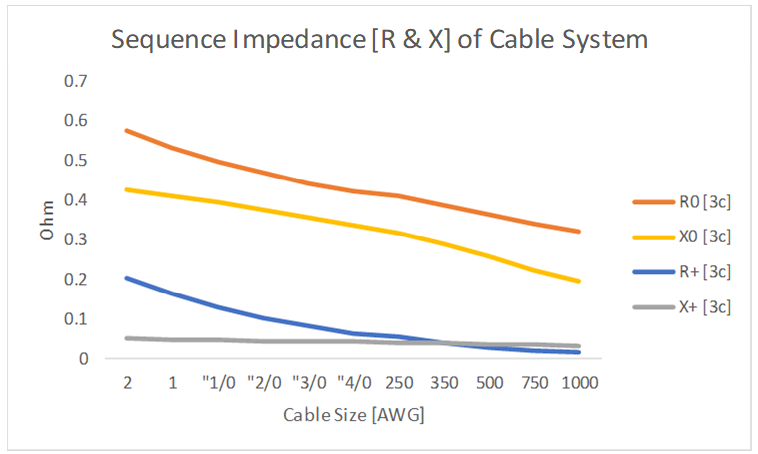
Here is a plot of positive and zero sequence impedance values for both three-single conductor [1c] flat formation and three conductor [3c] cable in trefoil formation.
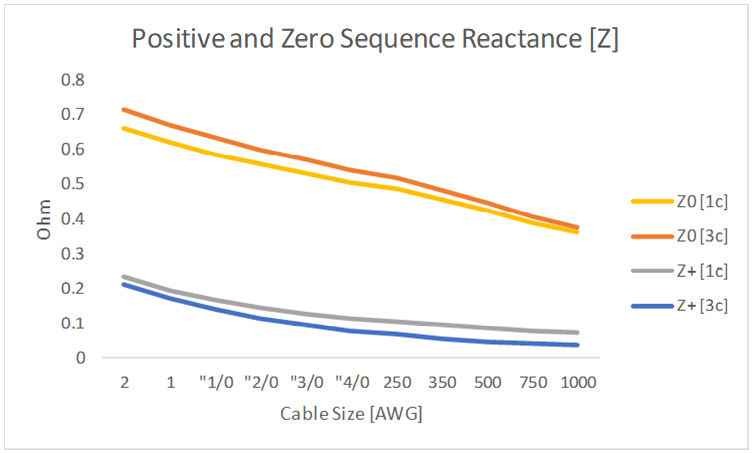
It can be observed that for a given cable size, laying the cable flat will have higher positive sequence impedance compared to three-core cable or three cables in trefoil formation. For zero sequence impedance flat cable formation offers lower impedance than the trefoil formation. Note that these are for the specific 15kV class cable with tape shield. Other cables may have slightly different characteristics.
Other Parameters:
*Shield resistance has great influence over zero sequence impedance and no influence over positive sequence impedance. See the graph below.
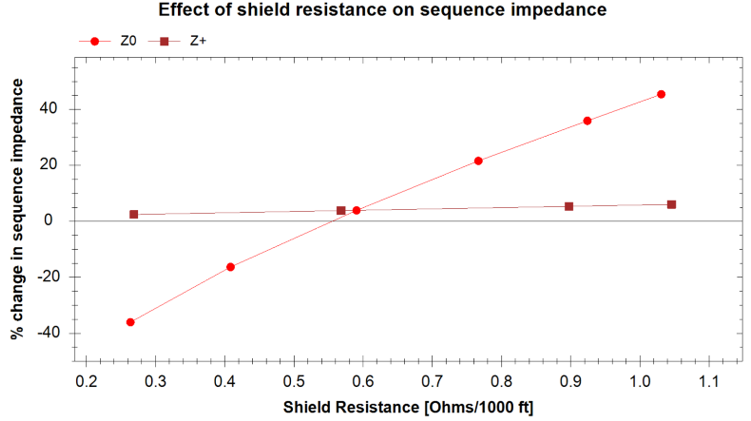
*Soil resistivity has very little influence on positive and zero sequence impedance.
*Cable insulation thickness (whether 100% or 133%) has very little influence over sequence impedance values. This means engineers can use the published values of sequence impedance values for 100% and 133% interchangeably.
*Cable spacing has strong non-linear influence over positive sequence impedance. Cables that are laid flat will have larger positive (and negative) sequence impedance compared to a three-conductor cable or cables that are otherwise in trefoil formation. Increase of first few inches will have significant increase in positive sequence impedance and after some distance the increase is not very pronounced.
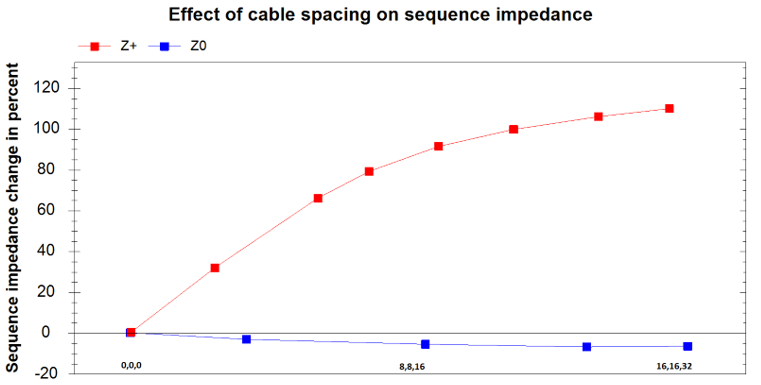
In the figure above 8,8,16 indicates that distance between adjacent cables are 8 inches and cables at opposite ends are at 16inches apart.
*Cable spacing has no significant impact on zero sequence impedance.
Medium voltage cable shield grounding, Medium voltage cable construction, Sequence components
